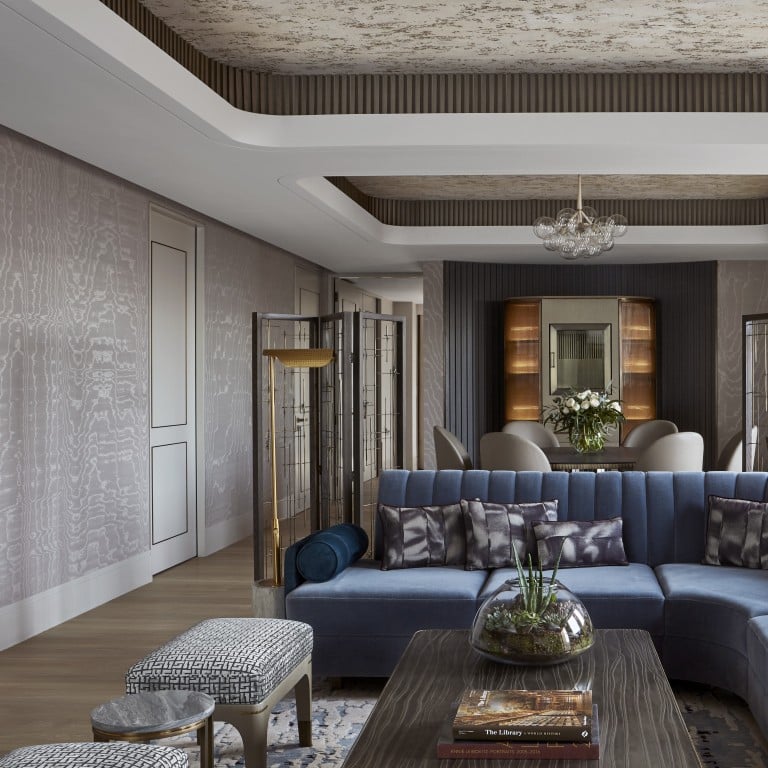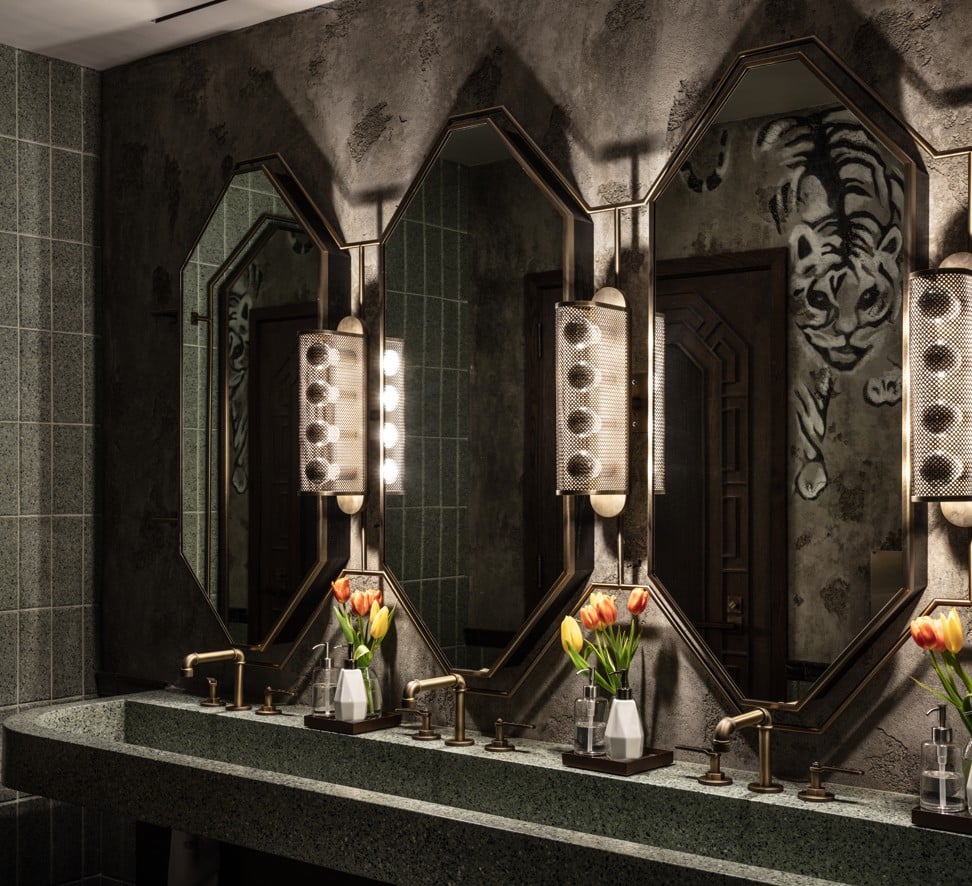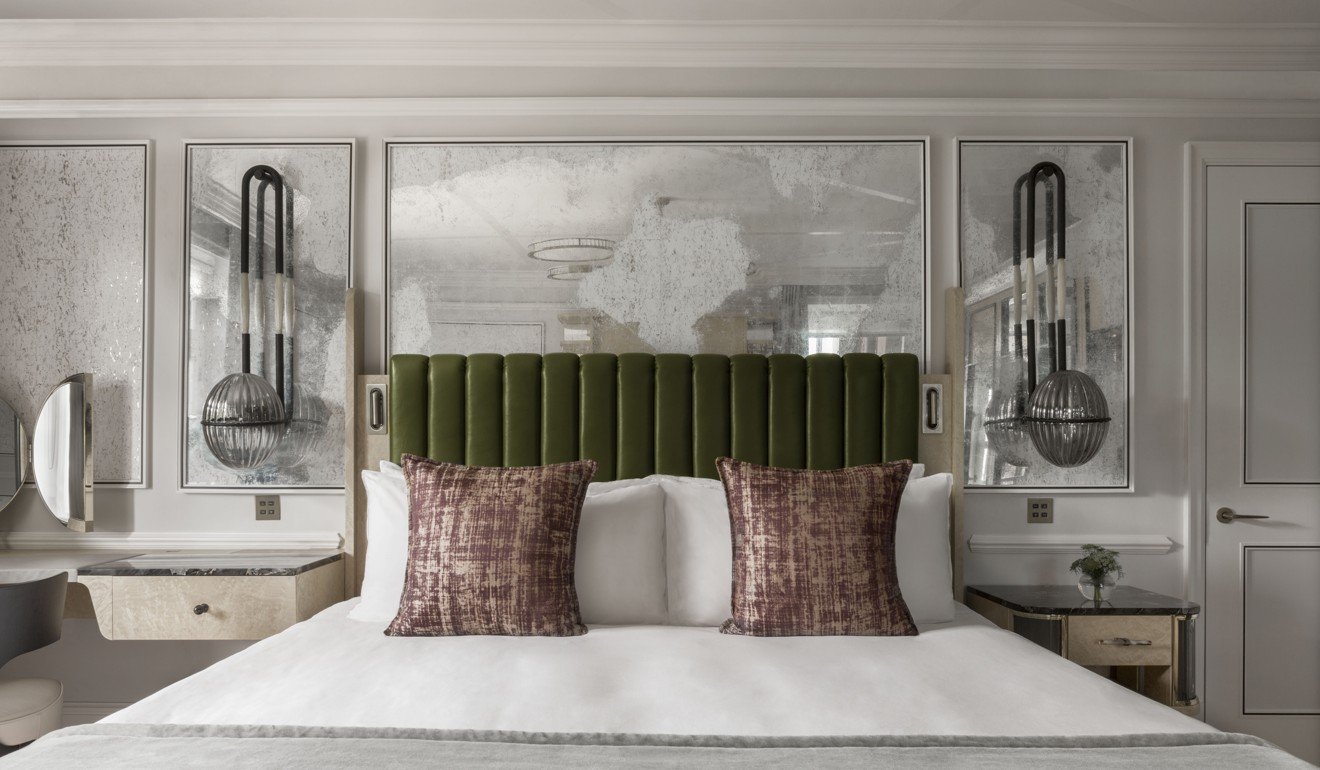
Why interior designer Joyce Wang’s flair for cinematic compositions puts emphasis on ‘less is more’
- Founder of London and Hong Kong practice, responsible for Mott 32 restaurants around the world, reveals her love of film, a sense of the dramatic and home
- Wang, known for her multilayered industrial chic concepts, says she is increasingly putting comfort first in her ideas
Even before starting her design studio in Hong Kong in 2011, interior designer Joyce Wang was already a global citizen.
Born in Hawaii, she went to the Massachusetts Institute of Technology in Boston, the Royal College of Art in London and Delft University of Technology in the Netherlands, and has worked for Foster + Partners.
A mother of three, she has gained a reputation for beautifully thought-out design and layered narratives over the years and won international hotel, wellness, restaurant and residential projects, while her eponymous practice has grown to encompass 11 staff in its Hong Kong office and 10 in London.

Her approach to design, has also evolved. “We care about comfort more and more,” Wang says of her studio.
“We were known for our metal, our industrial chic style and we still love the metal details, but we want [the spaces we design] to be comfortable, so metal might be in places you don’t touch. It’s something you might experience on a different level.”
The spaces Wang creates may put comfort first, but they still have that sense of drama that has always been a Wang Studio calling card.

“Creating cinematic compositions and narratives is still really important for me,” she says. “Great spaces have an impact on me in the same way great films do. You can talk about them afterwards and analyse them,” says Wang, citing the films of the late director Stanley Kubrick as a source of inspiration.
“He layers different clues in different parts of his stories, so when you go back and watch them again, you realise their significance and symbolism.”

Wang Studio’s flair for drama and layering is on display in the award-winning design of Mott 32 restaurant, in the basement of the Standard Chartered Bank Building in Des Voeux Road, Central – created in collaboration with Maximal Concepts –blending New York industrial style with Chinese imperial elements.
Creating cinematic compositions and narratives is still really important for me. Great spaces have an impact on me in the same way great films do. You can talk about them afterwards and analyse them
The studio’s concept was also used in the interiors of a second Mott 32 restaurant in Vancouver, in Canada, and a third Mott 32 restaurant, which opened in Las Vegas, in the United States, at the end of last year.
Both of the subsequent Mott 32 restaurants combine the feel of the Hong Kong restaurant with the addition of local cultural influences from the two cities, including sweeping arches, hedonistic chain chandeliers, velvet sofas in rich scarlet – and even a dining table made from a vintage roulette wheel – in the Las Vegas outlet.

Wang and her studio were also responsible for creating the sculptural silhouettes of the ceiling lights at the Entertainment Suite at The Landmark Mandarin Oriental Hong Kong.
She says the use of dramatic elements does not have to be convoluted. “It’s about working with simple geometries and not overcomplicating things,” she says. “That’s what allows us to remain timeless; because you can explain things simply in their own geometric form.”
A room that once worked really well might not anymore once you change the art – especially if you’ve used a lot of different materials.
When it comes to digitisation, Wang takes a similar outlook: home technology should be straightforward and easy to understand, based on a person’s existing frame of reference.
“It comes back to whether you’re ready for it,” she says.
“I stayed in a hotel recently where we couldn’t find the phone, and the phone was actually part of the digital device,” she says.
“You couldn’t even call down to ask them where the phone was! Once we realised where the phone was, we thought, ‘This is actually genius’ – but if somebody needs to explain it, then maybe you’re not quite ready for it.”

Is home tech ultimately about making life more convenient, then?
“I really like technology that makes things more flexible,” she says.
“For me, it’s about what I can do to make the most of my time with my family.
“With something like in-room dining at a hotel, now you might have an iPad and you can see a visual [of the food], so it’s easy to communicate with your kids about what they want to eat. Or you can order it in advance.
“You don’t have to be in the room to do it, you can be in the car on the way to the hotel. It’s about making the right choices as to where to simplify.”
Being able to achieve privacy, but at the same time still entertain in your home, has become really important
For Wang and her team, when designing a private home, that could mean incorporating features such as a home security and automation system, and pulling all functions together into one central remote control.
“Your home has to fit your lifestyle,” she says.

With the residential developers and private homeowners Wang works with, this increasingly comes down to a fine balance between public and private space.
“Being able to achieve privacy, but at the same time still entertain in your home, has become really important,” she says. “There are more and more demands on the home, but they’re not necessarily getting bigger.”
With the additional demands on the modern home – but without the addition of extra space – Wang’s advice to anyone looking to renovate is simple: less is more.
“Don’t go for too many finishings,” she says.
This is especially important if you’re someone who likes to swap your art around.
“A room that once worked really well might not anymore once you change the art – especially if you’ve used a lot of different materials.”

“Less is more” is a maxim that Wang also applies to her home, her hotel stays and her life.
“When I get to a hotel room, I clear everything out – all the compendiums like the menu, the collateral, the bits and bobs, I take it all out and I put it all in a drawer,” she says.
“That way, I can finally put my book down and see it. Then there’s no blurring between what’s part of the hotel and what’s part of me.
“I ‘Marie Kondo’ my place once or twice a year,” she says – referring to the Japanese organisation consultant, author and reality television star, who helps people clear clutter from their lives.
This story is the first of a five-part series about internationally acclaimed interior designers based in Hong Kong sharing their views on aesthetics, technology, and connectivity.
